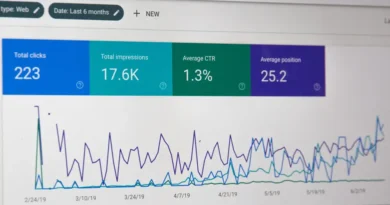Automotive Tech Innovations: Towards Safer and Autonomous Roads
In the rapidly evolving world of technology, the automotive industry is at the forefront of innovations that promise to revolutionize transportation as we know it. Integrating advanced technologies into vehicles has increased safety, efficiency, and the exciting prospect of autonomous driving. This article explores cutting-edge tech innovations reshaping the automotive landscape, paving the way toward safer roads and autonomous vehicles.
Adaptive Cruise Control (ACC)
Adaptive Cruise Control is a revolutionary advancement that enhances traditional cruise control by using sensors to maintain a safe distance from the vehicle ahead. The system automatically adjusts the vehicle’s speed and braking, mitigating the risks of rear-end collisions. ACC helps drivers maintain a consistent pace while reducing the stress of constant speed adjustments, leading to safer highways and minimizing traffic congestion.
Lane Departure Warning (LDW)
Lane Departure Warning systems utilize cameras and sensors to monitor the vehicle’s position within the lane. If the vehicle starts to drift unintentionally, the driver is alerted through visual or auditory warnings, prompting corrective action. LDW is one of the essential tech Innovations, reducing the chances of accidents caused by drowsy driving or distracted motorists.
Automatic Emergency Braking (AEB)
Automatic Emergency Braking is a life-saving tech innovation that can prevent or mitigate collisions by detecting potential crash scenarios. Using radar, cameras, or lidar, the system identifies obstacles and rapidly applies the brakes if the driver fails to respond quickly. AEB has significantly reduced rear-end collisions and pedestrian accidents, underscoring its potential to make roads safer for all users.
Blind Spot Monitoring (BSM)
Changing lanes can be risky, especially when vehicles are in blind spots. Blind Spot Monitoring systems use sensors to detect adjacent vehicles and warn drivers about potential dangers during lane-changing maneuvers. By providing drivers with crucial information, BSM reduces accidents caused by blind-spot-related issues.
Vehicle-to-Vehicle (V2V) Communication
V2V communication is a groundbreaking concept that enables vehicles to communicate with each other, exchanging critical safety data in real time. This Tech innovation allows cars to share information about their speed, location, and direction, enabling them to anticipate potential collisions and react proactively. V2V communication holds immense promise in creating safer roads by fostering a network of interconnected vehicles working together to prevent accidents.
Vehicle-to-Infrastructure (V2I) Integration
V2I integration complements V2V communication by allowing vehicles to interact with the surrounding infrastructure, such as traffic lights and road signs. By receiving real-time data from the infrastructure, vehicles can optimize their routes, adjust speeds, and anticipate changing traffic conditions. This technology can lead to smoother traffic flow, reduced congestion, and improved road safety.
Advanced Driver Assistance Systems (ADAS)
ADAS encompasses a range of innovative Tech Innovations that assist drivers in various aspects of driving. These systems include traffic sign recognition, automatic parking, and drowsiness detection. ADAS enhances the driving experience and contributes to accident prevention, making roads safer for everyone.
Connected Cars
The rise of connected cars has transformed vehicles into data-driven machines. These cars can collect and transmit information about road conditions, traffic patterns, and driver behavior. This wealth of data can be analyzed to identify potential risks and optimize transportation networks. Connected cars hold the key to more efficient traffic management and safer roadways.
Artificial Intelligence (AI) in Autonomous Vehicles
Artificial Intelligence plays a pivotal role in the development of autonomous vehicles. Self-driving cars can interpret data from sensors and cameras through machine learning algorithms, make real-time decisions, and navigate complex road scenarios. AI enables vehicles to learn from their experiences and continuously improve their driving abilities, edging closer to full autonomy.
High-Definition Maps
High-definition maps are crucial components of autonomous driving systems. These maps provide precise information about road geometry, lane markings, and traffic signs. With real-time sensor data, high-definition maps help autonomous vehicles navigate accurately and safely, even in challenging environments.
Also read: The Evolution of Wearable Tech: From Smartwatches to Bio-Implants
Conclusion
The automotive industry is witnessing an era of unprecedented technological advancement. From integrating AI and autonomous driving to many safety-focused features, tech innovations drive the automotive sector towards safer and more efficient roads. As these technologies mature, the vision of fully autonomous vehicles operating safely on interconnected roads is rapidly becoming a reality. Embracing these innovations is crucial for automobile manufacturers and essential for creating a future where transportation is more secure, sustainable, and accessible for all. With “Tech Innovations” leading the way, we are on the brink of a transportation revolution that will shape how we move for future generations.




